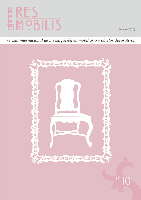
Res Mobilis-International Research Journal of Furniture and Decorative Objects
Scope & Guideline
Bridging Art and Anthropology in Scholarly Discourse
Introduction
Aims and Scopes
- Historical Analysis of Furniture Design:
The journal emphasizes the historical context of furniture design, exploring various periods and styles, including their cultural significance and evolution over time. - Cultural Studies in Decorative Arts:
It examines the interplay between furniture and broader cultural narratives, including how design reflects social, political, and economic conditions. - Material Culture and Craftsmanship:
The journal investigates the materials and craftsmanship involved in furniture making, including traditional techniques and modern innovations. - Interdisciplinary Approaches to Design:
Contributions often incorporate perspectives from history, art, anthropology, and design theory, fostering a rich, interdisciplinary dialogue. - Case Studies of Notable Designers and Styles:
The journal includes in-depth case studies of prominent designers and specific styles, providing insights into their impact on contemporary practices.
Trending and Emerging
- Modern and Contemporary Furniture Design:
There is a growing emphasis on modern and contemporary furniture design, exploring innovative approaches and the impact of technology on design processes. - Intersection of Design and Identity:
Recent articles are increasingly examining how furniture design intersects with issues of identity, including gender, ethnicity, and personal expression. - Sustainability in Design Practices:
An emerging focus on sustainability and eco-friendly design practices is evident, reflecting a global trend towards environmentally conscious consumption. - Digital and Computational Design Methods:
The incorporation of digital tools and computational design methods in furniture design is becoming a significant area of exploration, aligning with advancements in technology. - Globalization and Cross-Cultural Influences:
There is a trend towards analyzing the effects of globalization on furniture design, including the blending of styles and materials from different cultures.
Declining or Waning
- Focus on Traditional Techniques:
There has been a noticeable decrease in papers centered on traditional craftsmanship techniques, possibly overshadowed by contemporary design trends. - Regional Studies in Isolated Contexts:
The journal appears to be moving away from studies that focus exclusively on isolated regional styles, opting instead for broader, more global contexts. - Historical Furniture Restoration:
Topics related to furniture restoration and conservation, once prevalent, are becoming less frequent as the journal shifts towards contemporary design discussions. - Industrial Furniture Design Analysis:
The analysis of industrial furniture design, particularly from earlier centuries, seems to be waning as the journal increasingly emphasizes modern and postmodern influences.
Similar Journals

Taida Journal of Art History
Bridging theory and practice in the realm of art history.Taida Journal of Art History, published by NATIONAL TAIWAN UNIVERSITY, GRADUATE INSTITUTE OF ART, is a pioneering academic journal dedicated to the exploration and critique of art history, particularly within the unique cultural context of Taiwan. Since its inception in 2018, the journal has become an important platform for scholarly discourse, offering insights into the evolution of visual arts and performing arts, alongside comprehensive studies in history. With an ISSN of 1023-2095, it currently ranks within the Q4 category in Arts and Humanities (Miscellaneous) and the Q3 category in History and Visual Arts and Performing Arts, indicating its growing influence in these fields. Researchers, professionals, and students alike can benefit from its rigorous peer-reviewed articles that bridge theoretical frameworks with practical applications, making it an essential resource for those engaged in the arts and humanities. This commitment to fostering academic excellence is reflected in its Scopus rankings, where it stands at Rank #338/667 in Visual Arts and Performing Arts and Rank #1027/1760 in History. Engage with the Taida Journal of Art History to gain deeper insights into the evolving narratives of artistic expression.
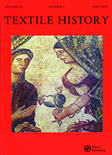
TEXTILE HISTORY
Illuminating the Cultural Tapestry of TextilesTEXTILE HISTORY is a distinguished journal focusing on the rich tapestry of textile development across various historical contexts, published by Routledge Journals, Taylor & Francis Ltd. With origins dating back to 1968, this journal serves as a crucial platform for scholarly discourse in the fields of history, industrial and manufacturing engineering, and business management. It holds impressive rankings, including Q2 in History and ranks within the top 20% in Arts and Humanities, reflecting its significant contribution to understanding the socio-economic and cultural implications of textiles. Additionally, it operates under a traditional access model, ensuring that quality research is preserved within a structured environment. The journal is an invaluable resource for researchers, professionals, and students alike, aiming to advance knowledge and inspire future studies in textile history. Situated in the United Kingdom, the editorial team is committed to fostering a vibrant academic community that engages with the dynamic intersections of textiles, industry, and cultural heritage.

Journal of Mosaic Research
Bridging gaps between archaeology, visual arts, and performance.Journal of Mosaic Research, published by ULUDAG UNIVERSITY, MOSAIC RESEARCH CENTER, is a distinguished open-access journal dedicated to the fields of archaeology, visual arts, and performing arts. Since its establishment in 2019, the journal has been committed to advancing scholarly discourse through innovative research and critical analysis, and it transitioned to an open-access model in 2021 to enhance accessibility and dissemination of knowledge. With an ISSN of 1309-047X, this journal has been recognized for its quality, evidenced by its 2023 rankings which place it in the Q3 quartile for both archaeology and visual arts and performing arts within the Scopus database. Operating from Bursa, Turkey, the journal provides a platform for researchers, professionals, and students to publish their findings, share insights, and engage with contemporary topics in these vital fields of study. As it continues to grow, the Journal of Mosaic Research aims to foster interdisciplinary collaborations and inspire future generations of scholars.

WAFFEN-UND KOSTUMKUNDE
Unveiling the Stories Behind Textile and WeaponryWAFFEN-UND KOSTUMKUNDE is a distinguished journal published by VERLAGSHAUS WERNER HOFMANN KG, focusing on the intricate study of arms and costumes within the realms of visual arts and cultural history. With its ISSN 0042-9945, this journal provides a unique interdisciplinary platform dedicated to the exploration of textile and weapon narratives, reflecting on their historical and social significance. Although it has discontinued its coverage in Scopus as of 2017, it maintains a dedicated readership within the arts and humanities community, ranking #372 out of 470 in its category with a 20th percentile. The journal aims to inspire scholarly discourse by publishing innovative research and critical analyses that deepen our understanding of material culture. Interested readers and contributors can explore a wealth of insights through its archives and ongoing contributions from experts in the field, based in Sonnefeld, Germany.
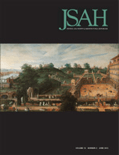
JOURNAL OF THE SOCIETY OF ARCHITECTURAL HISTORIANS
Bridging History and Modernity in Architectural StudiesJOURNAL OF THE SOCIETY OF ARCHITECTURAL HISTORIANS, published by the SOCIETY OF ARCHITECTURAL HISTORIANS, serves as a premier platform for the dissemination of scholarly research and critical discourse in the fields of architecture and architectural history. Established in 1970, this journal has undergone significant evolution, focusing on interdisciplinary studies that explore architectural heritage, theory, and practice. With a current impact factor that places it within the Q2 category in both History and Visual Arts and Performing Arts, as well as Q3 in Architecture, the journal maintains a robust reputation among academics and professionals alike. Although it operates under traditional access models, its essential role in fostering a deep understanding of architectural narratives and their socio-cultural contexts remains unparalleled. The journal also ranks favorably in Scopus, highlighting its importance in the arts and humanities, as well as engineering disciplines related to architecture. By bridging the gap between historical inquiry and contemporary architectural criticism, the JOURNAL OF THE SOCIETY OF ARCHITECTURAL HISTORIANS continues to be a vital resource for researchers, professionals, and students endeavoring to enrich their knowledge and contribute to this dynamic field.

Interiors-Design Architecture Culture
Bridging Disciplines: Where Design Meets Cultural NarrativesInteriors - Design Architecture Culture is a prominent academic journal dedicated to exploring the multi-dimensional relationship between interiors, design, and architecture, while also emphasizing their cultural significance. Published by Routledge Journals, Taylor & Francis Ltd, this journal serves as an essential platform for innovative research in the fields of architecture, cultural studies, and visual arts. The journal, which has been disseminating vital findings since its inception in 2010, plays a crucial role in fostering interdisciplinary discourse, and it currently holds a Q4 rank in Architecture and Cultural Studies, alongside a Q3 rank in Visual Arts and Performing Arts. Though it operates under a traditional access model, the journal's rigorously peer-reviewed articles are vital for researchers, professionals, and students alike, contributing to an enriched understanding of how interior spaces shape, and are shaped by, cultural dynamics. With an ISSN of 2041-9112 and E-ISSN of 2041-9120, the journal continues to make significant contributions to the academic discourse surrounding the design and cultural narratives of interior spaces.

Bulletin KNOB
Unlocking the Past, Shaping the FutureBulletin KNOB, published by the KONINKLIJKE NEDERLANDSE OUDHEIDKUNDIGE BOND-KNOB, is a reputable Open Access journal that has been disseminating knowledge since 1899, with a continued commitment to making research accessible to all. Based in the Netherlands, this journal provides a platform for scholarly articles that span the fields of Conservation, History, and the Visual Arts and Performing Arts. With its 2023 Scopus rankings placing it in the top quartiles within its category, Bulletin KNOB is recognized for its significant contribution to the advancement of these disciplines. Researchers, professionals, and students alike are encouraged to engage with the journal's diverse content that bridges historical narratives with contemporary practices, fostering a deeper understanding of cultural heritage. The journal’s commitment to excellence is further reflected in its Q3 and Q4 quartile rankings, making it an essential resource for anyone dedicated to the study of the arts and humanities.
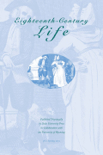
EIGHTEENTH-CENTURY LIFE
Exploring the Depths of 18th-Century ThoughtEIGHTEENTH-CENTURY LIFE is a prominent academic journal published by DUKE UNIVERSITY PRESS, focusing on the interdisciplinary study of the 18th century through the lenses of Cultural Studies, History, Literature, and the Visual Arts and Performing Arts. With an established history since 1977, this journal serves as a vital platform for scholars and students to publish innovative research and critical discourse, shedding light on the complex social, political, and artistic currents of the 18th century. Despite its current ranking in the lower quartiles according to Scopus, the journal continues to foster scholarly dialogue and contribute to the understanding of this pivotal era in Western history. Its accessible yet scholarly articles make it a valuable resource for researchers, educators, and students alike, facilitating engagement with 18th-century studies from various disciplinary perspectives.
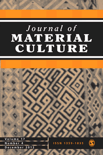
JOURNAL OF MATERIAL CULTURE
Unveiling the Stories Behind Objects and PracticesThe JOURNAL OF MATERIAL CULTURE, published by SAGE PUBLICATIONS LTD, stands at the forefront of interdisciplinary research in the realms of anthropology, archaeology, and arts and humanities. With an ISSN of 1359-1835 and an E-ISSN of 1460-3586, this esteemed journal has evolved since its inception in 1996, with its impactful contributions recognized by its Q2 ranking in the 2023 category quartiles across key fields. Positioned within the 82nd percentile for archaeology and 74th percentile for anthropology in Scopus, it serves as a vital resource for scholars, professionals, and students alike, keen to explore the complex interactions between material culture and social practices. While the journal adopts a traditional subscription model, its commitment to disseminating rigorous and innovative research ensures ongoing relevance and accessibility in a rapidly evolving academic landscape. The journal’s focus on fostering critical dialogues around materiality, identity, and meaning makes it indispensable for those committed to understanding the past and its implications for contemporary society in an increasingly material world.

Sanat Tarihi Dergisi-Journal of Art History
Celebrating the Evolution of Artistic ExpressionSanat Tarihi Dergisi-Journal of Art History is a distinguished academic journal dedicated to the exploration and analysis of art history, published by the reputable E.U. Printing and Publishing House in Turkiye. With an ISSN of 1300-5707 and an E-ISSN of 2636-8064, this openly accessible journal has been providing a platform for scholarly discourse since its transition to Open Access in 2016. Catering to a diverse audience of researchers, professionals, and students, the journal aims to disseminate original research articles, critical reviews, and theoretical discussions that contribute to the understanding of artistic movements and their cultural implications throughout history. By fostering interdisciplinary dialogue, Sanat Tarihi Dergisi plays a pivotal role in advancing the field of art history and encouraging the exchange of innovative ideas among scholars globally. Its dedication to enhancing accessibility to high-quality research makes it an invaluable resource for anyone engaged in the study of visual culture.